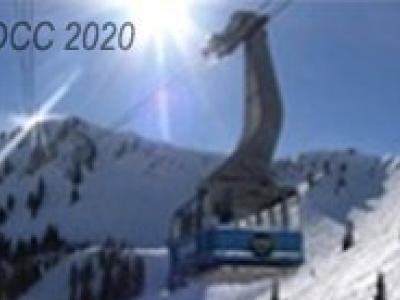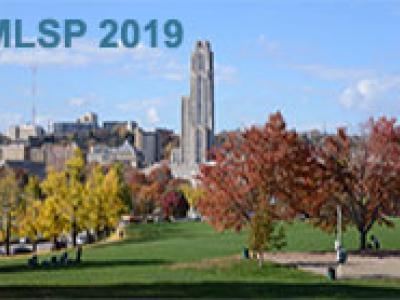
- Read more about Light Field Image Compression Using Multi-Branch Spatial Transformer Networks Based View Synthesis
- Log in to post comments
The recent years have witnessed the widespread of light field imaging in interactive and immersive visual applications. To record the directional information of the light rays, larger storage space is required by light field images compared with conventional 2D images. Hence, the efficient compression of light field image is highly desired for further applications. In this paper, we propose a novel light field image compression scheme using multi- branch spatial transformer networks based view synthesis.
- Categories:
 113 Views
113 Views
- Read more about Flow-Guided Temporal-Spatial Network for HEVC Compressed Video Quality Enhancement
- Log in to post comments
In this work, a flow-guided temporal-spatial network (FGTSN) is proposed to enhance the quality of HEVC compressed video. Specially, we first employ a motion estimation subnet via trainable optical flow module to estimate the motion flow between current frame and its adjacent frames. Guiding by the predicted motion flow, the adjacent frames are aligned to current frame. Then, a temporal encoder is designed to discover the variations between current frame and its warped frames. Finally, the reconstruction frame is generated by training the model in a multi-supervised fashion.
- Categories:
 95 Views
95 Views- Read more about HIGH PERFORMANCE SUPERVISED TIME-DELAY ESTIMATION USING NEURAL NETWORKS
- Log in to post comments
Time-delay estimation is an essential building block of many signal processing applications. This paper follows up on earlier work for acoustic source localization and time delay estimation using pattern recognition techniques; it presents high performance results obtained with supervised training of neural networks which challenge the state of the art and compares its performance to that of well-known methods such as the Generalized Cross-Correlation or Adaptive Eigenvalue Decomposition.
- Categories:
 100 Views
100 Views
- Read more about Counting dense objects in remote sensing images
- Log in to post comments
Estimating accurate number of interested objects from a given image is a challenging yet important task. Significant efforts have been made to address this problem and achieve great progress, yet counting number of ground objects from remote sensing images is barely studied. In this paper, we are interested in counting dense objects from remote sensing images. Compared with object counting in natural scene, this task is challenging in following factors: large scale variation, complex cluttered background and orientation arbitrariness.
- Categories:
 9 Views
9 Views
- Read more about Counting dense objects in remote sensing images
- Log in to post comments
Estimating accurate number of interested objects from a given image is a challenging yet important task. Significant efforts have been made to address this problem and achieve great progress, yet counting number of ground objects from remote sensing images is barely studied. In this paper, we are interested in counting dense objects from remote sensing images. Compared with object counting in natural scene, this task is challenging in following factors: large scale variation, complex cluttered background and orientation arbitrariness.
- Categories:
 37 Views
37 Views
- Read more about Serious Games and ML for Detecting MCI
- Log in to post comments
Our work has focused on detecting Mild Cognitive Impairment (MCI) by developing Serious Games (SG) on mobile devices, distinct from games marketed as 'brain training' which claim to maintain mental acuity. One game, WarCAT, captures players' moves during the game to infer processes of strategy recognition, learning, and memory. The purpose of our game is to use the generated game-play data combined with machine learning (ML) to help detect MCI. MCI is difficult to detect for several reasons.
- Categories:
 238 Views
238 Views
- Read more about MAC ID Spoofing-Resistant Radio Fingerprinting
- Log in to post comments
We explore the resistance of deep learning methods for radio fingerprinting to MAC ID spoofing. We demonstrate that classifying transmission slices enables classification of a transmission with a fixed-length input deep classifier, enhances shift-invariance, and, most importantly, makes the classifier resistant to MAC ID spoofing. This is a consequence of the fact that the classifier does not learn to use the MAC ID to classifying among transmissions, but relies on other inherent discriminating signals, e.g., device imperfections.
- Categories:
 65 Views
65 Views
- Read more about VayuAnukulani: Adaptive memory networks for air pollution forecasting
- Log in to post comments
Air pollution is the leading environmental health hazard globally due to various sources which include factory emissions, car exhaust and cooking stoves. As a precautionary measure, air pollution forecast serves as the basis for taking effective pollution control measures, and accurate air pollution forecasting has become an important task. In this paper, we forecast fine-grained ambient air quality information for 5 prominent locations in Delhi based on the historical and realtime ambient air quality and meteorological data reported by Central Pollution Control board.
- Categories:
 80 Views
80 Views
- Read more about A BP Neural Network Based Punctured Scheduling Scheme Within Mini-slots for Joint URLLC and eMBB Traffic
- Log in to post comments
Abstract—To satisfy the strict latency requirement of Ultra Reliable Low Latency Communications (URLLC) traffic, it is usually scheduled on resources occupied by enhanced Mobile Broadband (eMBB) transmissions at the expense of a highly degraded eMBB spectral efficiency (SE). In this paper, we propose a back propagation neural network (BPNN) based punctured scheduling scheme to address the URLLC placement problem on eMBB traffic within mini-slots.
- Categories:
 94 Views
94 Views
- Read more about Insights into the behaviour of multi-task deep neural networks for medical image segmentation
- Log in to post comments
Glandular morphology is used by pathologists to assess the malignancy of different adenocarcinomas. This process involves conducting gland segmentation task. The common approach in specialised domains, such as medical imaging, is to design complex architectures in a multi-task learning setup. Generally, these approaches rely on substantial postprocessing efforts. Moreover, a predominant notion is that general purpose models are not suitable for gland instance segmentation. We analyse the behaviour of two architectures: SA-FCN and Mask R-CNN.
- Categories:
 41 Views
41 Views